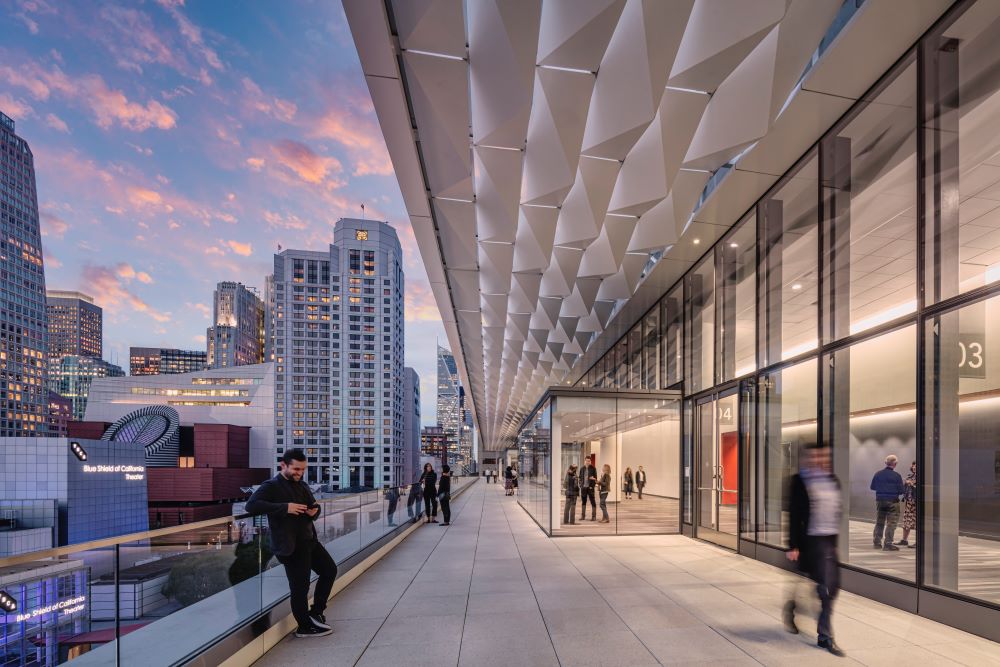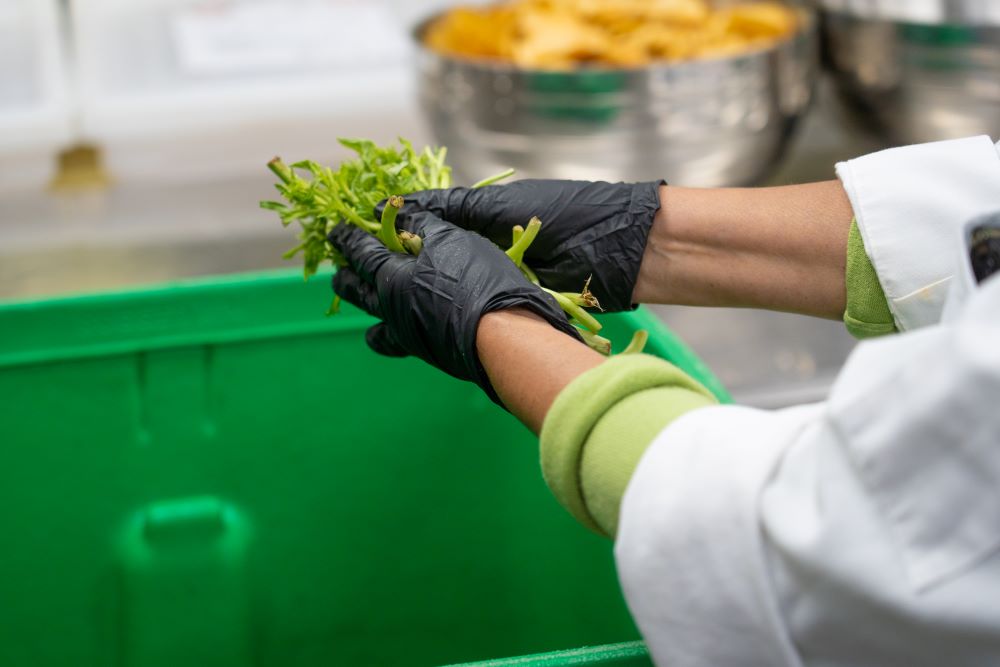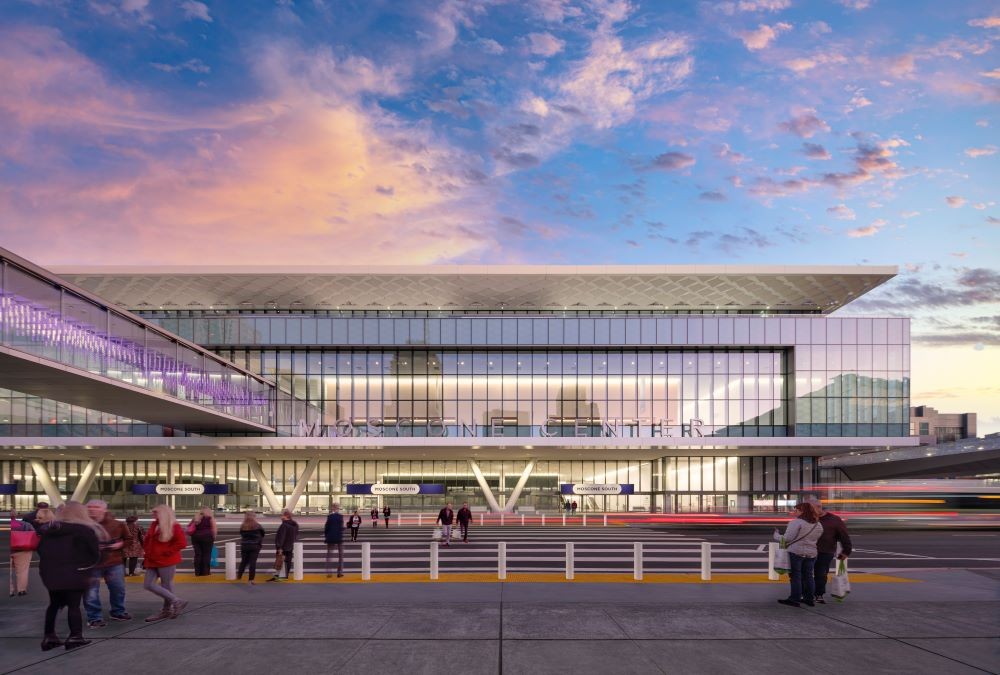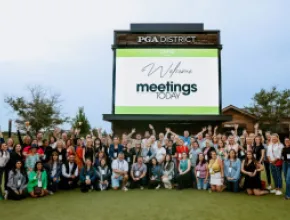Sustainability has been undoubtedly one of the hottest topics of discussion in the global meetings industry in 2023.
The U.S. is often perceived as lagging in its sustainability efforts, but the same cannot be said for California, which has long stood out as a leader on eco-friendly initiatives. The state is home to eight LEED-certified convention centers—the most of any state in the country—and is helping meeting organizers green their meetings in meaningful ways.
“California has been on the forefront of establishing LEED-certified venues,” said Sherida Sessa, group director, Buildings & Construction Group at Informa Connect, which puts on Greenbuild International Conference + Expo, the world's largest green building conference and expo. Greenbuild brought its event to both San Diego Convention Center and Moscone Center in San Francisco in 2021 and 2022. “When we go to book Greenbuild venues for future years, we start with certified facilities because it gives us the confidence that the team within the convention center is prepared for the practices that our audience expects us to adhere to for the duration of the event. It is also helpful because certified venues have the capabilities and procedures in place to give us a full report of the environmental impact of the event.
“We typically book Greenbuild many years in advance, so it’s important that each venue we select has a lasting commitment to sustainability and is committed to continuous improvement,” she added.
Commitment to sustainability is a prominent pillar at many California convention centers, as Greenbuild has found, along with many others. Here are a few that you can tap for your next green event in The Golden State.
Moscone Center, San Francisco

Moscone Center is a shining example of sustainability for a number of reasons. The facility has the lowest carbon footprint per delegate of any major convention center in North America and is the highest-scoring LEED Platinum convention center in the world following its expansion in 2018. A rooftop solar panel provides the center with approximately 19% of its power, and a greywater treatment system recovers 15 million gallons of water annually for reuse in landscaping, street cleaning and toilet flushing.
“More meetings and event organizers are enquiring about our sustainability initiatives,” noted Lori Lincoln, VP of global PR and communications for SF Travel. “We’re fortunate that Moscone Center is in the heart of one of the greenest cities in the world, located by world-class hotels and attractions and connected to San Francisco’s robust public transit system. And sustainability is factored into every part of Moscone’s operations, from how the buildings are designed to the food and beverage options to how we keep the facilities clean.”
[Related: How California Is Helping Green Your Event's F&B Plan]
San Diego Convention Center

San Diego Convention Center (SDCC) has made many strides in recent years to make meetings and events more eco-friendly. The facility upped its renewable energy use from 31% to 50%. Its kitchens also make an effort to source locally within a 150-mile radius and participate in local composting programs.
SDCC’s location also plays a large role in its sustainability efforts, almost ensuring that an event that selects the center will lower its carbon emissions. SDCC is located in the heart of downtown and is walkable to many hotels, restaurants and other attractions—in fact, The Wall Street Journal ranked it No. 5 for walkability out of all convention centers in the U.S. It’s also just three miles from the airport, is near a San Diego Trolley stop and is less than a mile from the Santa Fe Depot where attendees can connect to North San Diego, L.A. and more.
The City of San Diego itself has aggressive sustainability goals: The city’s Climate Action Plan has set a target of net-zero greenhouse gas emissions by 2035.
[Related: San Diego Shows Off Its Many Lures During PCMA Convening Leaders]
Los Angeles Convention Center
What makes the LEED Gold-certified Los Angeles Convention Center (LACC) unique is it’s a public-private facility, which means it’s closely aligned with the City of Los Angeles’ sustainability goals. The sunny locale is also home to the largest solar array on a municipally owned convention center in the U.S. at 2.21 megawatts. The LACC also has a “cool roof” and light-defusing windows to reflect sunlight and heat away from the building to save energy.
When it comes to F&B consumption, there are a number of green highlights. Single-use plastics were officially banned throughout the facility in April 2022 and replaced with aluminum bottles throughout cafes and catering operations. A 9,500-square-foot rooftop garden with produce enhances the center’s food service program of 90% locally sourced food. The facility has a consistent waste diversion rate of 70% or higher, even reaching 90% in 2016 when the U.S. Green Building Council Annual came to town.
SAFE Credit Union Convention Center
Fresh off of an expansion, the LEED Silver-certified SAFE Credit Union Convention Center is hearing increased interest in eco-friendly meetings from clients.
“The team is finding that meeting planners that are looking to bring their meetings to Sacramento are asking, ‘What green initiatives and sustainable initiatives do you have?’” said Matt Voreyer, general manager for the convention center, SAFE Credit Union Performing Arts Center and Memorial Auditorium. “So, from a potential convention standpoint, that’s a very hot topic.
“It’s not only what convention groups are asking, but we attend a lot of industry events and we are seeing there’s more of a push for green sustainability, and as you get the younger generation involved, they are more eco-friendly than others. You’ve got to do it in order to get the business,” he added.
Mark Quartarolo, director of facilities for the complex, can walk planners through all of the ways the convention center is working toward its sustainability goals, from water and energy reduction strategies to waste management and recycling.
Sacramento is widely known as the “Farm-to-Fork” capital, so sustainable F&B sourcing and waste diversion are key components of the convention center’s green initiatives. The facility composts food with Waste Management and partners with Centerplate to donate unused, consumable food to Works of Mercy Homeless Outreach Program. (In 2022, more than 19,000 pounds of food was shared and distributed).
[Related: A Refreshed and Expanded Convention Center Breathes New Life into Sacramento Meetings]
Plus: Insights From Greenbuild

Greenbuild International Conference + Expo is the largest annual event for green building professionals worldwide, where participants learn and source cutting-edge solutions to improve resilience, sustainability and quality of life in buildings, cities and communities.
So, it’s no surprise that the event is a pioneer in sustainability. It has been TRUE Zero Waste certified for several years, and in 2022 it achieved two new milestones: becoming the first event to receive Platinum Certification for Event Sustainability from the Events Industry Council (EIC); and upgrading its carbon emission calculation approach to be more inclusive of wider greenhouse gas emissions in line with leading global practices and science, which allowed Greenbuild to become CarbonNeutral® certified for the first time.
Destination selection is extremely important to achieving the sustainability goals of the expo, according to Sherida Sessa, group director, Buildings & Construction Group at Informa Connect, the parent company for Greenbuild.
“When we look at a destination, we, of course, look for facilities that can meet our event carbon neutrality and waste diversion goals; but beyond that we look at whether the destination can support the greenbuilding mission of our attendees,” Sessa explained. “We want to make sure that any city that we choose is on an upward trajectory for LEED-certified space, that there is investment in sustainability careers, that there’s an active greenbuilding community and that there is greenbuilding support from the localities both in terms of code and policy. Greenbuild aims to improve each city it visits, so it is important that the host city and community align with the event goals.”
In 2021, in its first year back since the 2020 COVID-19 pandemic, Greenbuild ventured to San Diego Convention Center, where the team was faced with a whole new set of hurdles.
“There were enhanced challenges in terms of waste as there was more emphasis on single-use items than in any other point of Greenbuild’s history,” Sessa said. “The San Diego Convention Center did a phenomenal job of working with us to figure out what our sustainability goals could look like with a renewed focus on ensuring the health of the occupant top-of-mind.”
Sessa also noted that attendees appreciated the walkability of San Diego Convention Center to hotels and nearby attractions, a win for both attendees and the environment, eliminating the need for carbon-emitting transportation. The event also donated 1,500 pounds of organics to AB Jones and Co., which is a social venture that centers around fork-to-farm sustainability to enhance Southern California soils.
In 2022, Greenbuild stayed in California, but this time traveled north to San Francisco at Moscone Center, where it encountered a staff that worked hard to assist the event in its sustainability goals as well.
“In San Francisco we hit a new set of challenges in terms of procurement, especially for catering, as we always try to source local food, but the team worked hard to make our signature Women in Green luncheon a success with as much locally sourced food as possible,” Sessa noted.
“The Metro in San Francisco was a great way for our attendees to tour local greenbuilding sites without having to use buses that drive carbon emissions,” she added.
Greenbuild hopes to be a zero-waste and net-zero carbon business by 2030, and partnering with cities such as San Diego and San Francisco are helping it move toward these goals.
Read more meetings and events news in California.
This article was produced in partnership with Visit California







